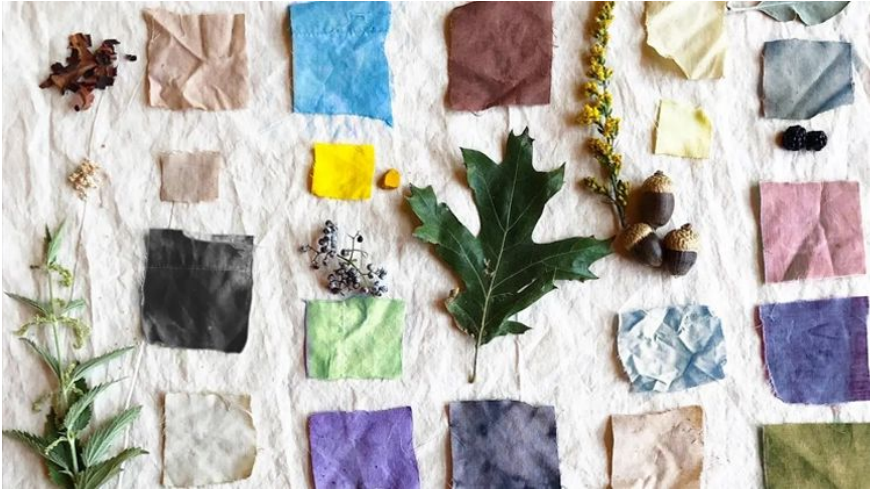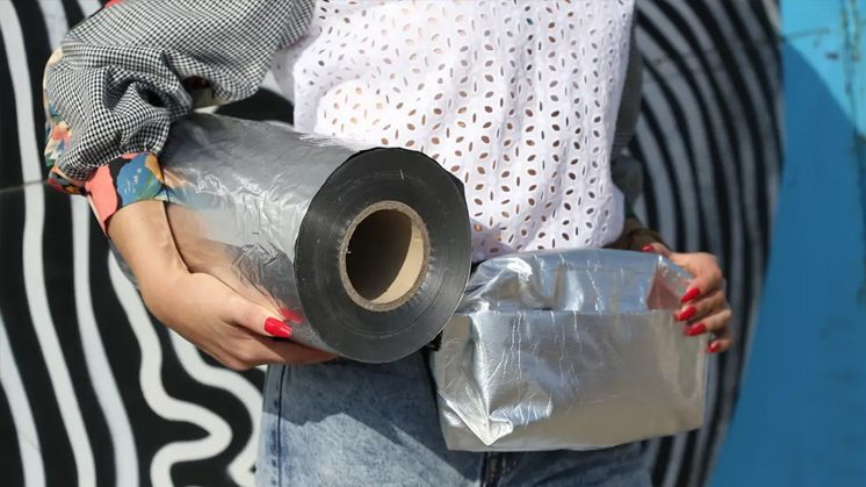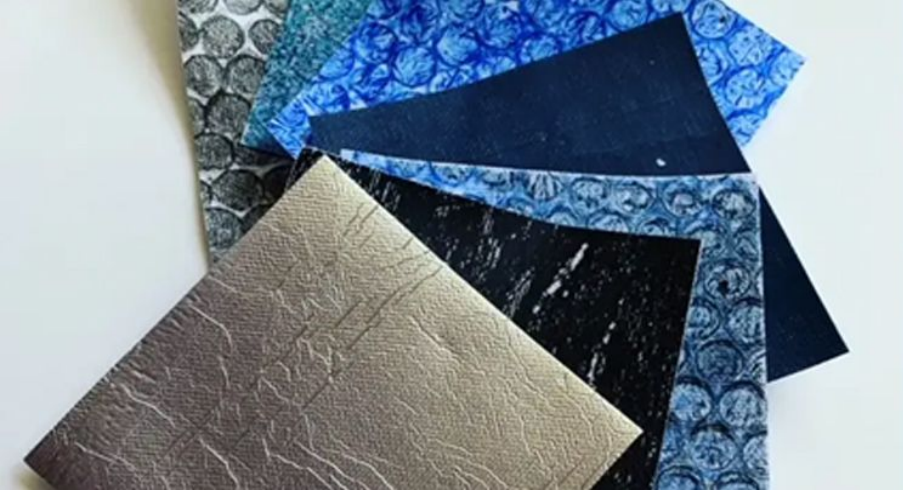Five latest technologies and plant-based sustainable innovations in the textile and fabric domain
Designers and brands are now embracing the power of nature to create a more sustainable, safer and healthier world through plant-based innovations.
by Anjori Grover Vasesi 13-September-2022 | 9 mins read

The fashion industry is known to be at the forefront of innovation. Textile technologies and textile innovations have constantly grown at a rapid pace allowing for explorations and futuristic interventions that better the planet we live on.
When it comes to fashion innovation, the industry is future-driven and consumer-focused with respect to the way our clothing and accessories are designed, manufactured, distributed and marketed and how and from which textile technology the garment was born from.
Now more than ever before, designers and brands are embracing the power of nature to create a more sustainable, safer and healthier world through plant-based innovations.
We explore the latest technologies leading textile innovation andfive new plant-based sustainable innovations in fabric technology set to impact the fashion industry.
Read on to discover.

An alarming 8.3 billion tonnes of plastic exist in the world today and by now, everyone knows thehazardous and detrimental impact the material has on our planet – land, air and water.
But new textile innovation in the fashion industry is coming to the rescue with solutions that aim to fightagainst plastic pollution.
Remeant takes single-use packaging plastic mainly derived from industrial waste, from factories and transforms it into sustainable textiles that can be used in fashion garments and homeware. Other brands are taking plastic bottles and turning them into yarn which can be used in various ways.
Brands repurposing plastic help tackling an ongoing threat to our planet. Since plastic already exists, repurposing it into something that can be put to use, allows to prevent it from ending up buried in landfill.

A world that allows one to print their own clothing is no longer a fantasy – 3D printing is evolving at a rapid pace and gaining popularity, especially in the fashion garment space.
It is now possible to print leather and fur-like materials and to make shapes and geometries thathave never been seen before at the click of a button.
This sustainable approach does not require deadstock fabrics piling around and also translates to minimum waste, if any. It is now possible to print leather and fur-like materials and to make shapes and geometries that have never been seen before at the click of a button and at a fraction of the effort and time required to stitch and produce a manually created garment.
VIRTUAL CLOTHES

With the rise in metaverse and digital technologies, brands have started to embrace virtual solutions thatallow users to try on clothes virtually.
By feeding basic information into an app such as gender, height and weight, one is now not only able to digitally visualise the way the clothing will look, but also get a feel of the textile the cloth is made of through just the screen.
In future, this can reduce the dependence on sample pieces resulting in a decline in deadstock.
TECHNOLOGIES THAT TURN PLANT-BASED AND PLASTIC WASTE RESOURCES INTO NEW TEXTILES

With mass exodus from leather and fur being propelled due to laws and consumer outrage, designers and brands are now actively exploring Gen-Next materials that provide excellent alternatives to such environmentally hazardous materials.
Owing to the rapid development in textile technologies, it is now easier than ever before to move to ecofriendly textiles. Companies worldwide are exploring materials made from fruit, leather made from cactus, and single-use plastic are even being given a new lease of life. When it comes to plant-based leather textiles, there is a wide variety available in the market today, to suit any and every product.
DIGITAL TEXTILE LIBRARIES FOR DESIGNERS

In today’s landscape, digitalisation allows designers and brands to find almost any textile on the net. There are many new material and textile libraries that come up every day aiding market players to refine their search.
This makes sense due to the growing investments in textile technologies. The main challenge for those libraries is to find a way to keep up with the rapid changes and demonstrate how the materials look and feel in reality. Also, since the pandemic, many exhibitions have become digital and people can virtually attend and see the most updated designs directly on their screen while sitting in their living room.
FIVE NEW PLANT-BASED SUSTAINABLE INNOVATIONS IN FABRIC TECHNOLOGY

In addition to the above, five new sustainable, carbon-negative, plant-based technologies for fabrics have just been launched in the market by Moonlight Technologies.
These innovations hold the power to dramatically change the future of fashion.
Allie Sutton, CEO of Moonlight Technologies and Dr. Phyllis Levine, Global Medical Director at Moonlight, a Gynecologic Oncologist with a degree in Materials Science and Engineering from M.I.T, partnered with a firm working on plant chemistries for different applications.
“The future of fashion is natural dyes and products that don’t need to be washed,” Sutton said. The selfcleaning technologies are applied to fabric after the dyeing process when other treatments and finishings are added. Moonlight Technologies’ mission to use the power of nature to create a more sustainable, safer and healthier world through plant-based innovation appeals to brands around the world who, Sutton says, are already lined up to acquire the technology.
The five technologies are as follows:
Eco Armor
One of the world’s first sustainable, air, plastic and fabric antimicrobial technologies that kills 99.9 percent of bacteria and viruses, mould and fungus.
Insect Proof
A plant-based and permethrin-free bug repellent technology for fabrics, skin and hard-goods.
Mindfully Clean
A self-cleaning fabric technology which allows products treated with it to stay fresh and clean regardless of use and rarely needing to be washed.
Odour Safe
A plant-based technology which permanently destroys and eliminates bad odours on fabrics.
Natural Dyes
A complete range of sustainably derived, non-toxic, biodegradable colorants for hard goods and textiles. First discovered in the 1850s, synthetic dyes were valued for their ability to be mass produced and colour textiles vibrantly, but they contain toxic chemicals that are harmful to the environment. Natural dyes which are non-allergenic and derived from plants, trees, flowers and fungi, are safe for both the planet and people.
These plant-based sustainable innovations in fabric technology could transform apparel, uniforms, home textiles, air filtration, travel, hospitality products, fitness equipment, electronics, furniture, paint and more.
All the technology can be applied to any fabric type, both synthetic and natural.
Those who work with natural dyes know it’s almost impossible to get true dark colours, but Moonlight Technologies can offer a full range of natural dyes extracted from plants including one of the first naturalblacks that does not come from charcoal.
While Sutton’s career has been based in the fashion industry, he is excited to make these sustainable solutions available to all fields of business. They could transform apparel, uniforms, home textiles, air filtration, travel, hospitality products, fitness equipment, electronics, furniture, paint and more.
TECHNOLOGY INNOVATIONS SUSTAINABILITY
